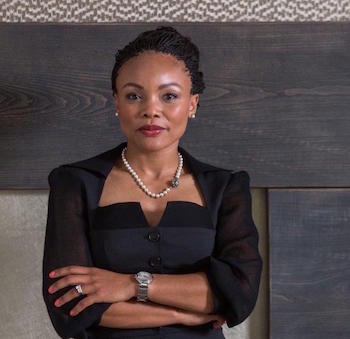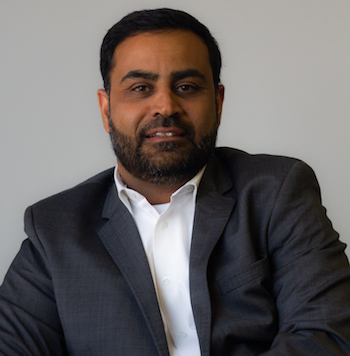MICHAEL BRATT asked some of South Africa’s top chief marketing officers what the next big thing in marketing is, how they see advertising spend playing out in 2019, and the role trust plays in the marketing process.
Faye Mfikwe, chief marketing officer, FNB
The next big thing?
 Marketing efforts within the industry will continue to evolve from being purely a demand creation function to co-creating value, in conjunction with customers. FNB has taken a consistent approach to ensure that the customer experience across all FNB platforms is simple, efficient and relevant. This has allowed the brand to create an integrated communications network that has been deeply entrenched in markets that are increasingly becoming competitive and contested.
Marketing efforts within the industry will continue to evolve from being purely a demand creation function to co-creating value, in conjunction with customers. FNB has taken a consistent approach to ensure that the customer experience across all FNB platforms is simple, efficient and relevant. This has allowed the brand to create an integrated communications network that has been deeply entrenched in markets that are increasingly becoming competitive and contested.
Marketing initiatives within FNB have been driven by a deep understanding of our customers through the utilisation of customer data and insights. These insights demonstrate how the customer demographic is changing; has influenced how we take our products to market; and in addition, it has also influenced the way we communicate through our marketing efforts. The shift in demographics has encouraged us to invest in digital capabilities that empower our customers to manage and help themselves with their banking.
The big push towards digital has encouraged us to look at new ways to use our channels. One such example is purposeful marketing and branding, which highlights that relevant customer experiences and engagements continue to grow in importance and value for consumers. Purposeful marketing simply defined is ‘a brand doing good for society’. Brands that have courage and confidence to get involved in socially relevant causes, which make a positive difference, ensure the brand remains relevant and succeeds for a longer period in the future.
Our omni-channel approach ensures our customers experience a seamless and integrated experience. This has helped in building solid foundations for relationships between the customer and the brand.
Media spend trends?
The proliferation of new technologies, tools and data has changed the entire media landscape. We see shifts in specific spend habits across every channel; however, one of the key trends that we will see in 2019 is the purchase of ‘multi-channel media partnerships’. These become valuable and effective when we overlay our customer channel consumption over the profile of media channels.
The bank has recognised the need to be ‘specialists’ in the specific channels that we use. But there is an ongoing need to broaden our scope to include other channels that aim to grow engagement and audiences. We have also realised the importance of engaging with audiences on relevant channels that build affinity and advocacy, and working with media owners gives us the platform to do just that. This is most evident in the radio space where media owners package experiences/events with broadcast elements, live interviews/editorial, generic media, social media, DJ/brand ambassador endorsements, live streaming and programmatic display to offer any brand an integrated media solution with multiple points of awareness and engagement.
Ongoing media measurement and the impact that it has on the brand is a key driver for the bank. The FNB logo has deep associations in South Africa and Africa. This alone has shaped perceptions of the brand and influenced the way our marketing and media efforts are driven.
Trust levels?
Trust in any relationship is an important principle that cannot be ignored. Externally, we see a divide between client and agency that is becoming more and more blurred, as clients need to play a more active role in the strategy formulation and creative process.
Our customers play an active role in the way our solutions are created and targeted. We understand customer needs through our interactions and data. This has helped us to build customer centric solutions which are tailored to their needs and ultimately position the brand as a trusted money manager.
Agencies on the other hand need to have a more intimate understanding of the client’s business and challenges to co-create communication and campaigns that deliver value not only to the brand but to its customers as well. As marketing becomes an ever more strategic tool in delivering business growth, understanding of key business priorities helps the bank inform innovative campaign strategies and create content that is creative and aligned to our strategy.
This customer/banking relationship can only be successful if there is absolute trust between all parties. This helps on delivering the best solutions which will maximises value for all parties.
Junaid Munshi, chief commercial officer, Cell C
The next big thing?
 The rise of digital and mobile marketing – video will be a key area here. Personalised marketing is another significant trend; this will allow for consumers to be exposed to relevant advertising ‘in the moment’ with improved return on investment (ROI) metrics as well as increased focus on customer experience.
The rise of digital and mobile marketing – video will be a key area here. Personalised marketing is another significant trend; this will allow for consumers to be exposed to relevant advertising ‘in the moment’ with improved return on investment (ROI) metrics as well as increased focus on customer experience.
Media spend trends?
Digital spend (social media and online marketing) will continue to grow across all sectors.
Trust levels?
The necessity for accredited media buying agencies is more relevant than ever. These agencies and their tech partners will need to better utilise technologies such as artificial intelligence (AI) to identify fraudulent media as well as consumer facing content such as ‘fake news’.
Heidi Brauer, chief marketing and customer officer, Hollard Insurance
The next big thing?
 Great strategy will get its sexy back! By “great” I mean clear, succinct, understood-by-everyone and dog-eared-from-use strategy. Strategy that keeps us focused and on purpose, that helps us spend our money efficiently and effectively.
Great strategy will get its sexy back! By “great” I mean clear, succinct, understood-by-everyone and dog-eared-from-use strategy. Strategy that keeps us focused and on purpose, that helps us spend our money efficiently and effectively.
Strategy that makes everyone say: ‘I get it, I know what to do, I’m on it’. Strategy written by the marketers together with their agencies, not strategy that’s outsourced to a strategist and then forgotten forever because it doesn’t resonate, it’s too complicated and its human truth sounds like dozens we’ve heard before. Strat’s back!
Media spend trends?
Not so many years back I said “new media” won’t be called that for long, and it wasn’t. I said digital agencies and traditional agencies would need to shift from their ends of the continuum and find a comfy space near or with one another where the brand wins. Lo and behold! Now the marketers need to get savvy and think about their media spend in an integrated way. I think there are still too many marketers terrified by the digital world. And I think it’s suited agencies to own the acronyms till now. Time for a change. When the strat leads everything, and digital isn’t a space that produces sweats and shivers in marketers, media spend will become more holistic and customer centric and the brand will win.
Trust levels?
I say all the time that ‘it takes a village to raise a brand’. The brand is the only reason that the agency and client are together in the first place, and the moment we forget that, we have a problem. Our job is to understand the brand, know its purpose, strengths, weaknesses and what we dream for it. As if it were our child.
As long as we take that accountability to heart, trust shouldn’t be an issue. If we respect each other as co-parents of our brand, we all win. When we have divergent objectives, whatever they may be driven by (performance reviews, bonuses, awards seasons, board presos, new brooms, etc.), the trust goes. And let’s never forget, people do business with people, not companies, so no matter the brand name, no matter the agency name, it is incumbent on each of us to be a mensch (a person of integrity and honour).
Francois Viviers, executive: marketing and communications, Capitec
The next big thing?
 I’m not sure about the ‘next big thing’ and don’t really believe that long term strategy should be based on short term trends. However, we do believe that the role of marketers in organisations is rapidly changing. Marketing should own the relationship with the client, and represent the client within the organisation.
I’m not sure about the ‘next big thing’ and don’t really believe that long term strategy should be based on short term trends. However, we do believe that the role of marketers in organisations is rapidly changing. Marketing should own the relationship with the client, and represent the client within the organisation.
This means driving product development and new innovation within a company, owning and enabling a client centric culture and building on a valuable client experience that ensures long term value for the client and the company.
Marketing strategy should inform business strategy and follow it, and marketers should spend as much time focusing within their organisation as they do focusing on communicating with their market.
Media spend trends?
We see the change from traditional media towards digital channels speeding up. This is nothing new, but we do believe that the rate of change is exponential and it will be driving spend towards digital media channels as well as owned digital channels. The evolution of the way we communicate with our audience sees us moving away from ‘one-to-many’ communication in broadcast media, to one-to-one conversations on social, web and app platforms. In Capitec, this is especially relevant since we are starting to see more value in building our relationship with our own 10 million clients and enabling them to be brand advocates, than we see in traditional brand communication with the broad public. That is a big mind shift for traditional marketers.
Trust levels?
We view the old client-agency relationship as something of the Mad Men era – it looks great on TV, but it is irrelevant today. Marketing strategy is and should be owned by the company, and we are very protective of it. Agencies should know the business as well as we do, and support marketing with fresh perspectives, creative insights and world class execution. This means working closely together and fostering an open and transparent relationship that is built on the same values and culture.














